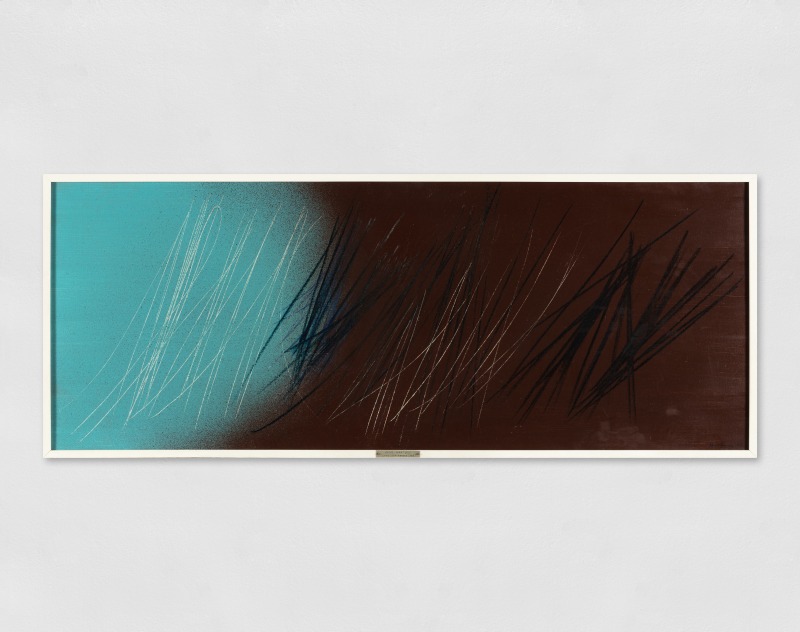-
Biography
Hans Hartung (Leipzig, Germany 1904 - Antibes, France 1989)
Hartung was born in 1904 in Leipzig, Germany. He studied philosophy and art history at the Bildenden Künste Academy in Leipzig and then in Dresden. In 1922, at a mere 18 years of age, he produced a series of watercolours which already showed a search for expressiveness in forms.
In 1932, he moved to Paris, where he met Calder, Kandinsky, Miró and Mondrian; he exhibited his first pieces at the Independent Salon. By the end of the 1930s, he had taken part in numerous European exhibitions and his artworks were included in important private collections such as that of Albert Eugene Gallatin in Philadelphia.
His abstraction, in its first stage, is very free and gestural. He brings instinctive expressions to the canvas in a precise and meticulous manner, his productions characterized by a well-calibrated spontaneity.
Between 1932 and 1934, he was in Menorca, where he was accused of espionage; after a few clashes with the Gestapo, he fled, also from Germany, and moved to Paris, divorcing from his wife, Anna-Eva Bergman in 1938 (after nine years of marriage) and enlisted in the Foreign Legion.
At the end of the war, he returned to Paris and became a French citizen.
Enjoying a scenario favourable to abstract art, he became one of the main personalities alongside Pierre Soulages and Zao Wou-Ki.
Hartung also reconnected with Anna-Eva Bergman, the two fell back in love and remarried. They shared a studio in Paris and, in 1973, moved to Antibes on the French Riviera, in an atelier villa which is now home to the Hartung Bergman Foundation.
In 1956, he received the Guggenheim International Prize and the Venice Biennale prize for painting in 1960. In 1976, he published his memoirs (Self-portrait) and, the next year, he joined the Fine Arts Academy in Paris.
In the 1980s, he painted with giant brushes that he made himself. He also used airless guns and various tools to be able to paint at an advanced age, projecting colour onto monumental surfaces. His last paintings retained the clarity which characterised his style.
In 1981, the Städtische Kunsthalle in Düsseldorf, the Statesmanlike Moderner Kunst in Munich and the Henie-Onstad Foundation in Oslo presented a retrospective linked to the Kokoschka prize. In 1985, the Grand Palais in Paris held a retrospective.
He died in Antibes in 1989.
Copyright the artist. Photo UniCredit Group (Sebastiano Pellion di Persano)
-
Works
-
Exhibitions
Hans Hartung: German-French, 1904-1989
A German painter, naturalised French, among the greatest exponents of informal abstractionism in Europe.Join our mailing list
* denotes required fields
In order to respond to your enquiry, we will process the personal data you have supplied in accordance with our privacy policy.




